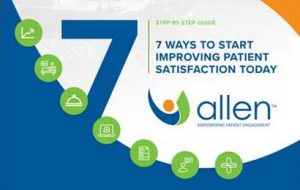This hurricane season is predicted to be one of the most active in recent history. The National Oceanic and Atmospheric Administration (NOAA) forecasts a range of 17 to 25 named storms, 8 to 13 hurricanes and 4 to 7 major hurricanes for the 2024 season. Hurricane Beryl kicked off the season in July, wreaking havoc throughout the Caribbean and Texas coastal communities. This article I wrote for New Home Source a few years ago is a good reminder for property owners in coastal communities.
We’re just a month into the official start of the 2018 hurricane season, and though weather forecasters are calling for a “normal” season, anyone now planning to build or rebuild in hurricane-prone regions should take a lesson from homeowner experiences following the brutal 2017 storms.
Homeowners Connie and Houston Radcliff had just finished rebuilding their home last summer after 2016 flooding when Hurricane Harvey barreled down on the Texas coastal region. Harvey’s rains caused river flooding in their entire town of Simonton, and flooded up to four feet of their home for a second time.
Despite having flooded twice, the Radcliffs were bound by Federal Emergency Management Agency (FEMA) regulations to rebuild the house precisely as it was pre-flood. Other Houston homeowners – whose homes FEMA designated as a 51 percent “substantial loss” – chose to rebuild at a higher elevation, or raise the home to three feet above flood levels. But at a cost starting at $90,000, “Most houses were not worth raising,” Connie said. “On top of that expense, you still have repair/replace everything that was damaged/lost. “
A few hours to the east in Naples, Florida, homeowners Stephany and Michael Carr also stared down their second hurricane in recent years. After their home was impacted by Hurricane Wilma in 2003, they rebuilt according to a tougher statewide building code that was adopted in 2002. The Carrs say that more stringent code helped their home go virtually unscathed when Hurricane Irma came ashore last fall. Researchers say the tougher building code reduced windstorm losses by nearly three-fourths.
Today, programs such as My Safe Florida Home offer free home wind inspections to help Floridians determine steps they can take to
strengthen their homes. Other states, including South Carolina, have launched similar initiatives.
How can I protect my home?
Homebuilders and buyers in any hurricane-prone area are wise to take a lesson from the experiences of homeowners like the Radcliffs and Carrs.
Homebuilding best practices include taking steps to:
- Strengthen the roof deck with stronger roof fasteners
- Create a secondary barrier to prevent water intrusion
- Install stronger roof fasteners that keep roofs from blowing off
- Use nails instead of staples
- Brace gable-end walls
- Use roof tie-down clips
- Consider concrete walls
- Opt for standing steam metal roofs with continuous panels
- Choose hurricane impact-resistant windows and doors
- Raise the foundation to minimum FEMA flood elevations
- Use flood vents in garages and garage doors
- Adopt resilient design
What is resilient design?
According to the nonprofit Resilient Design Institute, resilient design is the intentional design of buildings, landscapes, communities, and regions in order to respond to natural and manmade disasters and disturbances—as well as long-term changes resulting from climate change—including sea level rise, increased frequency of heat waves, and regional drought.
“I’ve been promoting the concept of passive survivability—that we should be designing and building houses that will maintain habitable conditions if they lose power,” said Alex Wilson, president of the nonprofit Resilient Design Institute, in Brattleboro, Vermont, in a recent Custom Builder article. “To do that, you need to incorporate a very robust building envelope: well insulated with high-quality, high-performance windows and durable construction. It’s also about incorporating passive solar heating and cooling and natural ventilation.
Resilient design and construction and newer building codes that factor in changing weather patterns are a double-edge sword for homeowners. Implementing them comes at a cost, adding 20 to 30 percent to the cost of building. But, those steps can be the difference between a home that withstands the wrath of a storm or shatters under the pressure.



Blog / November 13, 2023
Magnificent Moab: Southeast Utah's Mecca for Outdoor Adventure